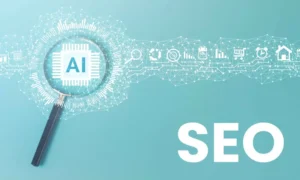Toyota has long been a leader in the automotive world, known for its reliability, innovation, and eco-friendly solutions. One of its most exciting advancements is the development of Intelligent Mobility, a concept that aims to transform the driving experience by incorporating safety, efficiency, and connectivity. Toyota’s Intelligent Mobility goes beyond traditional driving, focusing on smarter interactions between vehicles, drivers, and infrastructure. This system reflects Toyota’s commitment to improving urban mobility while paving the way for a more sustainable future.
If you’re interested in experiencing these advancements in person, checking out the latest models at Toyota dealerships Texas can give you firsthand insight into how Toyota’s Intelligent Mobility works. In this article, we’ll explore the various aspects of Toyota’s Intelligent Mobility and the benefits it offers to drivers and communities alike.
Toyota’s Intelligent Mobility Overview
Toyota’s Intelligent Mobility is an umbrella term for a wide range of technologies that aim to make cars safer, cleaner, and more enjoyable to drive. It encompasses three key pillars: Mobility for All, Electrification, and Autonomous Driving. These pillars shape the way Toyota is creating vehicles that are smarter, safer, and better connected to society.
Mobility for All
Toyota’s vision for “Mobility for All” is rooted in inclusivity and accessibility. The company aims to create transportation solutions that accommodate everyone, including the elderly and people with disabilities. Through initiatives like automated driving systems and advanced public transportation networks, Toyota works to ensure that mobility is not limited by physical barriers or geography.
One such innovation is the Toyota Human Support Robot (HSR), which is designed to assist individuals with limited mobility. Additionally, Toyota’s focus on car-sharing platforms and urban mobility services ensures that transportation is available to a broader range of users.
Benefits of Electrification
Toyota has been a pioneer in hybrid technology since the launch of the Prius in 1997. Today, the company continues to lead the way with a variety of hybrid, plug-in hybrid, and fully electric vehicles. The shift toward electrification aligns with the company’s mission to reduce emissions and promote sustainable driving.
Improved Fuel Efficiency and Lower Emissions
Toyota’s hybrid powertrains offer significant fuel savings and reduced carbon emissions compared to conventional gas-powered cars. For instance, models like the Toyota Corolla Hybrid and the RAV4 Hybrid provide excellent fuel economy, helping drivers reduce their carbon footprint without compromising performance.
Cutting-Edge Battery Technology
Toyota continues to invest in developing advanced battery technology, including solid-state batteries, which promise longer range, shorter charging times, and greater safety than traditional lithium-ion batteries. These innovations ensure that Toyota stays ahead of the curve in the competitive EV market.
Energy Management Systems
Toyota’s electrified vehicles also integrate with smart energy management systems, allowing drivers to optimize charging during off-peak hours and contribute to a more sustainable energy grid. Some models even offer vehicle-to-grid (V2G) technology, enabling cars to send unused energy back to the grid to help balance electricity demand.
Autonomous Driving and Driver Assistance
Autonomous driving is another essential pillar of Toyota’s Intelligent Mobility. While fully self-driving cars are still in development, Toyota has introduced several advanced driver assistance systems (ADAS) to make driving safer and more convenient today.
Toyota Safety Sense
Toyota Safety Sense (TSS) is a suite of safety features designed to assist drivers and reduce the likelihood of accidents. TSS includes:
- Pre-Collision System with Pedestrian Detection: Alerts drivers of possible collisions and applies the brakes automatically if necessary.
- Dynamic Radar Cruise Control: Maintains a set speed and distance from the vehicle ahead, adjusting automatically based on traffic conditions.
- Lane Departure Alert with Steering Assist: Warns drivers if the vehicle begins to drift out of its lane and gently steers it back on course.
- Automatic High Beams: Switches between high and low beams automatically based on oncoming traffic, improving nighttime visibility.
These features offer an extra layer of safety by detecting hazards and assisting the driver in maintaining control of the vehicle.
Hands-Free and Semi-autonomous Driving
In select markets, Toyota offers Advanced Park Assist and Highway Teammate, semi-autonomous systems designed for specific driving scenarios. These technologies help drivers navigate parking lots or highways with minimal effort, reducing fatigue during long journeys.
Connected Services and Infotainment
Connectivity is a major focus of Toyota’s Intelligent Mobility. The company aims to integrate vehicles into the digital ecosystem, offering drivers seamless access to information, entertainment, and remote control functions.
Toyota Connected Services
Toyota’s connected services allow drivers to monitor and control their vehicles through smartphone apps. Features include:
- Remote Start and Climate Control: Drivers can start the engine and adjust climate settings remotely to ensure a comfortable environment before entering the car.
- Vehicle Health Reports: Real-time diagnostics provide updates on the vehicle’s condition, alerting drivers to maintenance needs.
- Find My Car: GPS tracking helps drivers locate their vehicle, a useful feature in crowded parking areas.
Infotainment and Navigation
Toyota vehicles come with advanced infotainment systems, featuring Apple CarPlay and Android Auto integration, allowing drivers to access their favorite apps directly from the car’s display. Additionally, Toyota’s navigation system provides real-time traffic updates, ensuring that drivers take the most efficient routes and avoid delays.
The introduction of Wi-Fi hotspots in select models ensures passengers can stay connected during long trips, making Toyota vehicles ideal for modern lifestyles.
Environmental and Social Impact
Toyota’s Intelligent Mobility is not just about improving individual driving experiences; it’s also focused on creating a positive impact on the environment and society.
Hydrogen Fuel Cell Technology
In addition to hybrids and electric vehicles, Toyota is a leader in hydrogen fuel cell technology. The Toyota Mirai, for example, uses hydrogen to generate electricity, producing only water as a byproduct. Fuel cell technology has the potential to revolutionize transportation, especially in commercial sectors like buses and trucks.
Smart City Initiatives
Toyota’s commitment to Intelligent Mobility extends to urban planning. The company is working on developing Woven City, a futuristic city in Japan designed to test new mobility technologies, including autonomous vehicles, hydrogen power, and smart infrastructure. This initiative reflects Toyota’s vision of creating cities that are more sustainable and better connected.
Conclusion:
Toyota’s Intelligent Mobility strategy is transforming the way we think about transportation. By focusing on electrification, safety, autonomous driving, and connectivity, Toyota is building a future where vehicles are more efficient, safer, and seamlessly integrated into our daily lives. The company’s investments in hybrid, electric, and hydrogen technologies demonstrate its commitment to reducing emissions and promoting sustainability.





























